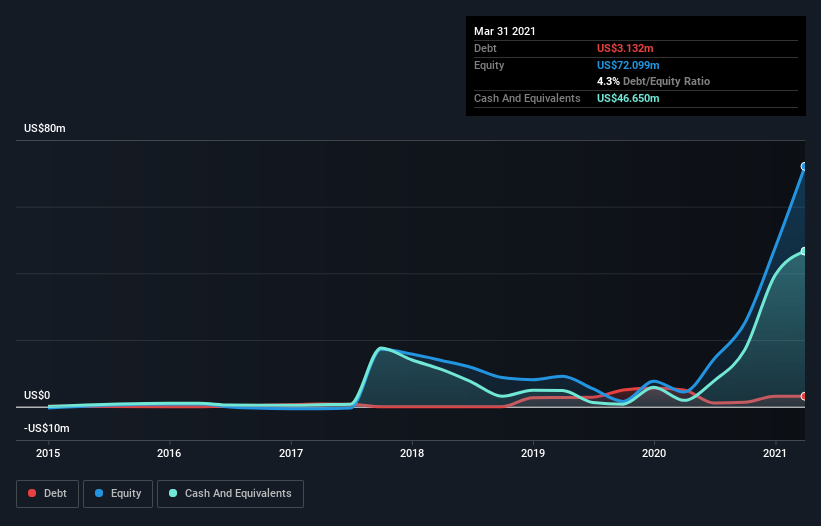Does Arcimoto (NASDAQ:FUV) Have A Healthy Balance Sheet?
Legendary fund manager Li Lu (who Charlie Munger backed) once said, 'The biggest investment risk is not the volatility of prices, but whether you will suffer a permanent loss of capital.' When we think about how risky a company is, we always like to look at its use of debt, since debt overload can lead to ruin. Importantly, Arcimoto, Inc. (NASDAQ:FUV) does carry debt. But should shareholders be worried about its use of debt?
When Is Debt Dangerous?
Debt and other liabilities become risky for a business when it cannot easily fulfill those obligations, either with free cash flow or by raising capital at an attractive price. In the worst case scenario, a company can go bankrupt if it cannot pay its creditors. However, a more frequent (but still costly) occurrence is where a company must issue shares at bargain-basement prices, permanently diluting shareholders, just to shore up its balance sheet. By replacing dilution, though, debt can be an extremely good tool for businesses that need capital to invest in growth at high rates of return. The first thing to do when considering how much debt a business uses is to look at its cash and debt together.
Check out our latest analysis for Arcimoto
What Is Arcimoto's Net Debt?
The image below, which you can click on for greater detail, shows that Arcimoto had debt of US$3.13m at the end of March 2021, a reduction from US$5.01m over a year. However, it does have US$46.7m in cash offsetting this, leading to net cash of US$43.5m.
A Look At Arcimoto's Liabilities
Zooming in on the latest balance sheet data, we can see that Arcimoto had liabilities of US$3.47m due within 12 months and liabilities of US$3.09m due beyond that. Offsetting these obligations, it had cash of US$46.7m as well as receivables valued at US$13.9k due within 12 months. So it actually has US$40.1m more liquid assets than total liabilities.
This short term liquidity is a sign that Arcimoto could probably pay off its debt with ease, as its balance sheet is far from stretched. Simply put, the fact that Arcimoto has more cash than debt is arguably a good indication that it can manage its debt safely. When analysing debt levels, the balance sheet is the obvious place to start. But it is future earnings, more than anything, that will determine Arcimoto's ability to maintain a healthy balance sheet going forward. So if you're focused on the future you can check out this free report showing analyst profit forecasts.
Over 12 months, Arcimoto reported revenue of US$3.0m, which is a gain of 84%, although it did not report any earnings before interest and tax. With any luck the company will be able to grow its way to profitability.
So How Risky Is Arcimoto?
We have no doubt that loss making companies are, in general, riskier than profitable ones. And in the last year Arcimoto had an earnings before interest and tax (EBIT) loss, truth be told. Indeed, in that time it burnt through US$22m of cash and made a loss of US$19m. With only US$43.5m on the balance sheet, it would appear that its going to need to raise capital again soon. With very solid revenue growth in the last year, Arcimoto may be on a path to profitability. Pre-profit companies are often risky, but they can also offer great rewards. There's no doubt that we learn most about debt from the balance sheet. But ultimately, every company can contain risks that exist outside of the balance sheet. To that end, you should be aware of the 4 warning signs we've spotted with Arcimoto .
At the end of the day, it's often better to focus on companies that are free from net debt. You can access our special list of such companies (all with a track record of profit growth). It's free.
This article by Simply Wall St is general in nature. It does not constitute a recommendation to buy or sell any stock, and does not take account of your objectives, or your financial situation. We aim to bring you long-term focused analysis driven by fundamental data. Note that our analysis may not factor in the latest price-sensitive company announcements or qualitative material. Simply Wall St has no position in any stocks mentioned.
Have feedback on this article? Concerned about the content? Get in touch with us directly. Alternatively, email editorial-team (at) simplywallst.com.

